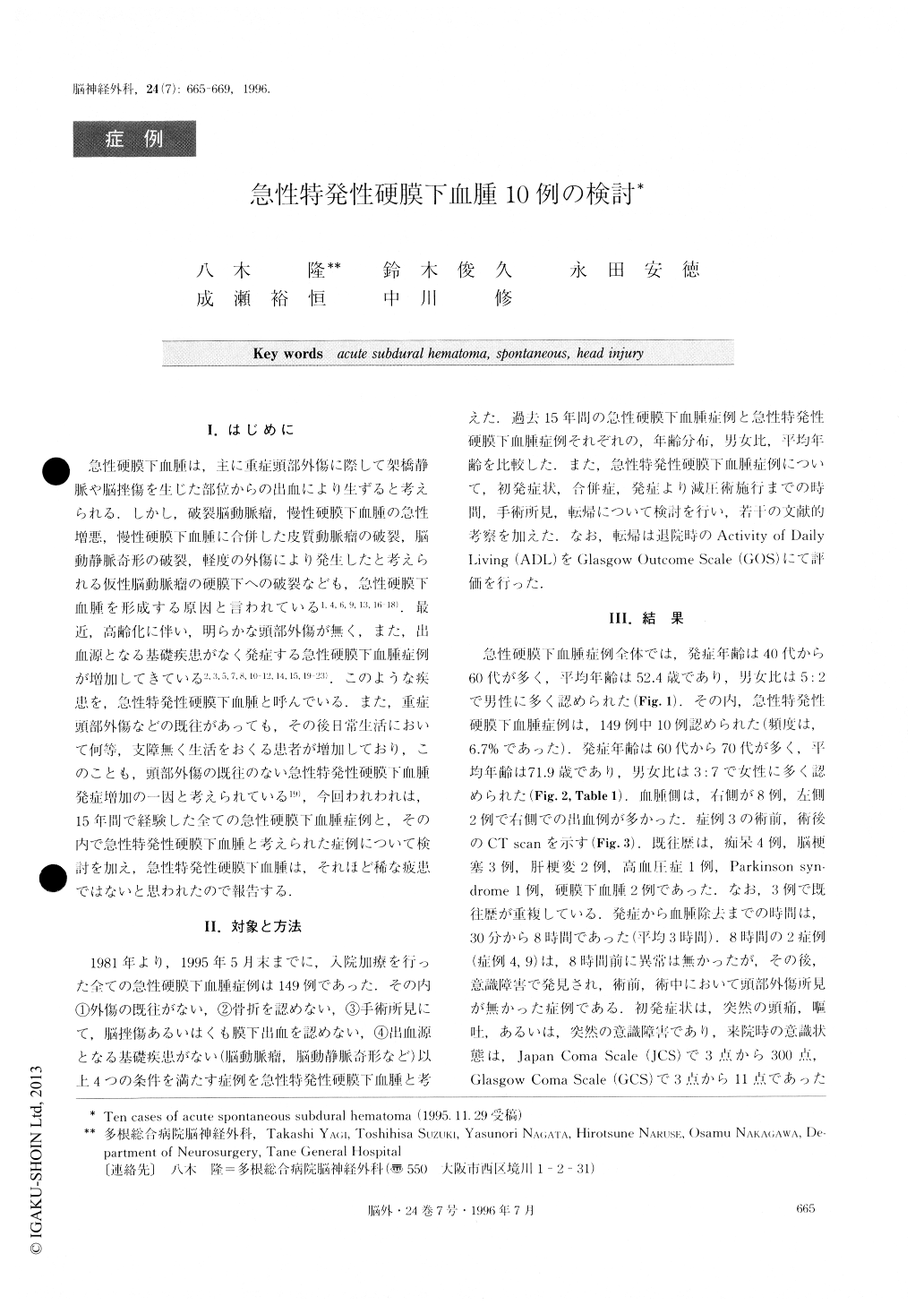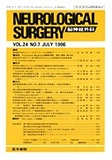Japanese
English
- 有料閲覧
- Abstract 文献概要
- 1ページ目 Look Inside
I.はじめに
急性硬膜下血腫は,主に重症頭部外傷に際して架橋静脈や脳挫傷を生じた部位からの出血により生ずると考えられる.しかし,破裂脳動脈瘤,慢性硬膜下血腫の急性増悪,慢性硬膜下血腫に合併した皮質動脈瘤の破裂,脳動静脈奇形の破裂,軽度の外傷により発生したと考えられる仮性脳動脈瘤の硬膜下への破裂なども,急性硬膜下血腫を形成する原因と言われている1,4,6,9,13,16-18).最近,高齢化に伴い,明らかな頭部外傷が無く,また,出血源となる基礎疾患がなく発症する急性硬膜下血腫症例が増加してきている2,3,5,7,8,10-12,14,15,19-23).このような疾患を,急性特発性硬膜下血腫と呼んでいる.また,重症頭部外傷などの既往があっても,その後日常生活において何等,支障無く生活をおくる患者が増加しており,このことも,頭部外傷の既往のない急性特発性硬膜下血腫発症増加の一因と考えられている19),今回われわれは,15年間で経験した全ての急性硬膜下血腫症例と,その内で急性特発性硬膜下血腫と考えられた症例について検討を加え,急性特発性硬膜下血腫は,それほど稀な疲患ではないと思われたので報告する.
In this paper, 10 cases of acute spontaneous subdural hematoma (ASSDH) among 149 cases of all acute sub-dural hematoma (ASDH) were reported with a review of 36 cases in the literature.
The age of the patients with ASSDH ranged from 48 to 90 years (mean age of 71.9 years), and the average age of ASDH patients was 52.4 years. The male to female ratio of ASSDH and ASDH was 3:7 and 5:2, respectively. ASSDH patients were older than ASDH patients, and ASSDH patient tended to be female. Four cases of ASSDH patients had the past history of de-mentia. The outcome of 5 cases of ASSDH with gener-al complications was fatal. During operation in all cases except one, spurting arterial rupture from a branch of the cortical artery adjacent to the Sylvian fissure was observed.
It was presumed in the literature that the mechanism of the arterial rupture is gliding movement of the brain, tearing an arterial twig with dural attachment, or the existence of the junction of an arterial twig as an anato-mically weak point. Hypertension, alcoholism, demen-tia, past history of subdural hematoma or subarachnoid hemorrhage may be important influencing factors in this mechanism.

Copyright © 1996, Igaku-Shoin Ltd. All rights reserved.


